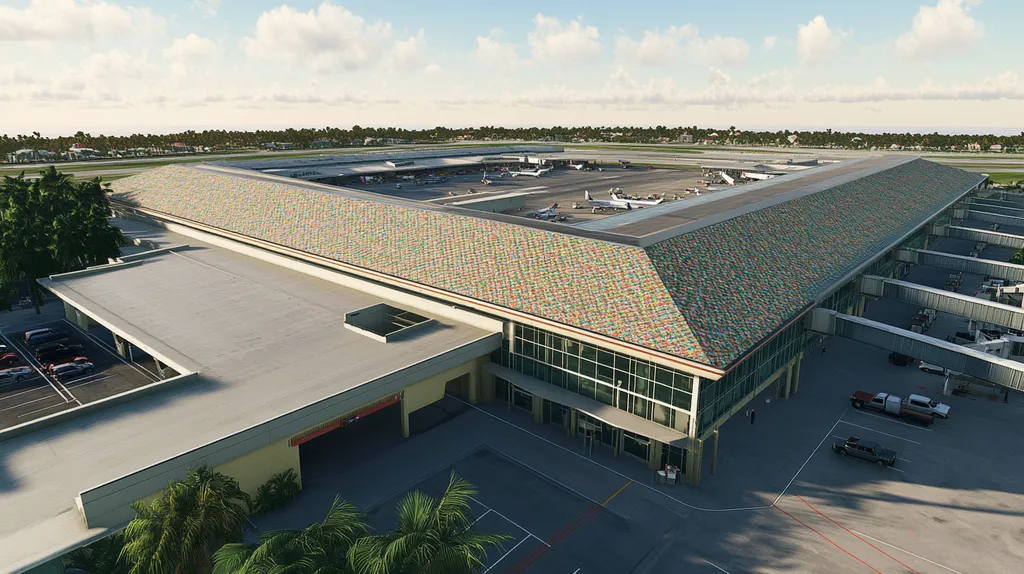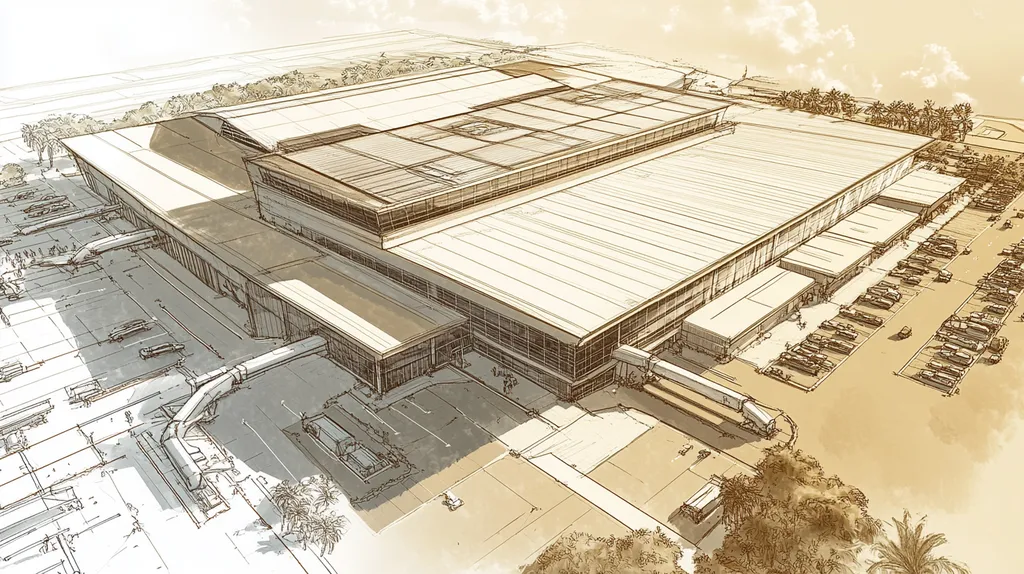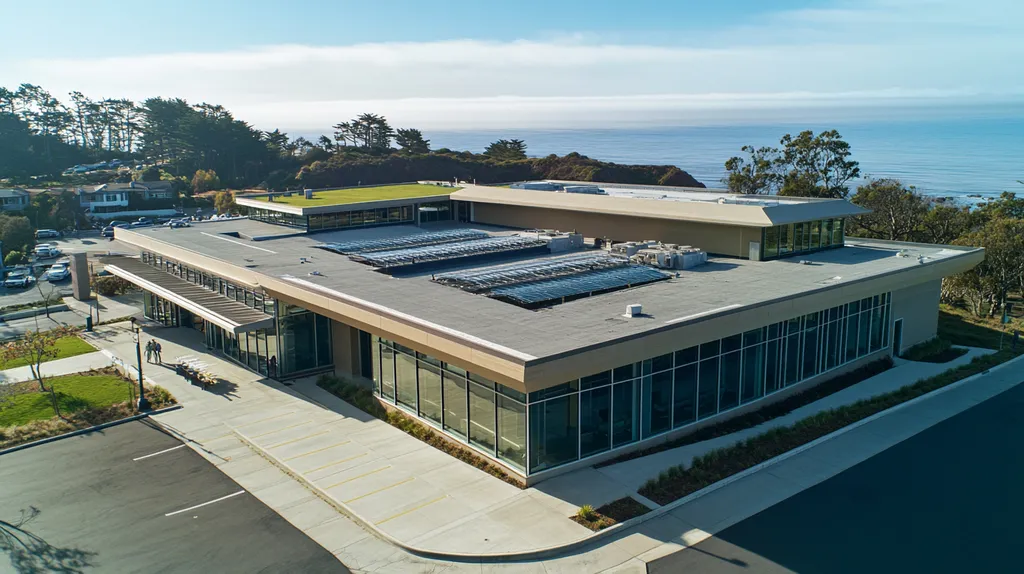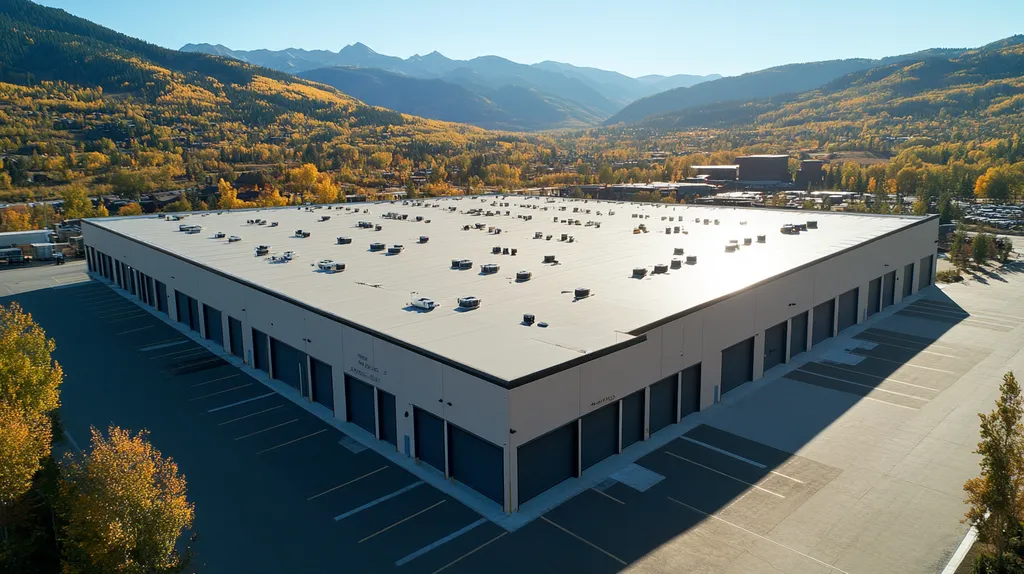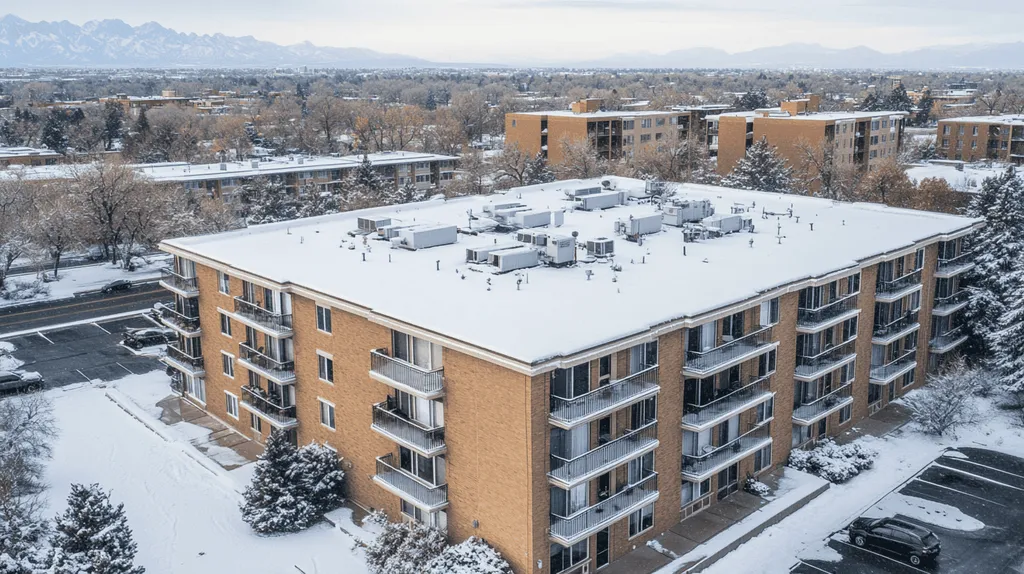Historic commercial roofing projects demand careful cost consideration, with restoration expenses frequently ranging from $15 to $40 per square foot – potentially leading to six-figure investments for larger properties. Without proper planning, these costs can spiral dramatically, threatening both budgets and building integrity.
Property owners and facility managers must navigate complex decisions around materials, labor, installation methods, and long-term maintenance requirements. Understanding these fundamental elements is crucial for preserving architectural heritage while maintaining financial viability.
This comprehensive guide examines the critical factors driving historic commercial roofing costs, from material selection through implementation and ongoing care.
SECTION 1: FUNDAMENTAL CONCEPTS
Understanding the cost range for historic commercial roofing is crucial for property owners and facility managers. Delaying crucial decisions about roofing can result in serious structural damage and skyrocketing repair expenses. For example, a roof that’s not properly maintained can lead to leaks, mold growth, and even disrupt business operations. Core factors such as roofing material types, labor considerations, and geographic influences play significant roles in shaping these costs. This section will clarify these fundamental concepts.
Roofing Material Types and Costs
The choice of roofing material has a significant impact on the costs associated with historic commercial roofing. Common options include slate, tile, metal, and built-up roofing, each with varying price tags. For instance, slate can set you back more than $20 per square foot, while metal alternatives may fall between $5 and $15 per square foot.
When selecting materials, consider more than just the initial expenditure. Historic properties often demand specific materials to preserve their architectural charm and meet preservation guidelines. While these specialized materials may require a larger upfront investment, they can save you from costly repairs in the future.
Moreover, assessing long-term performance and ongoing maintenance costs is essential. Although a less expensive roofing option may seem appealing at first, it could lead to frequent repairs that inflate the overall cost of ownership. It’s vital for property owners to balance immediate expenses against potential long-term liabilities when making their material choices.
Labor and Installation Factors
Labor costs often factor heavily into the total expense of roofing projects, and this aspect is frequently underestimated. Skilled roofing professionals typically charge more, but their expertise is critical for ensuring the durability and quality of the roofing installation. Poorly executed installations can cause leaks and other issues that may not surface until years later.
The complexity of the roofing system heavily influences labor costs. Historic roofs often feature intricate designs requiring specialized knowledge and techniques. Properties needing structural reinforcements or located in hard-to-access areas may further elevate labor expenses.
To avoid surprises, property owners should factor in these labor dynamics during the budgeting stage. It’s wise to solicit detailed quotes from experienced contractors that include both material and labor estimates. By grasping these factors, property owners can potentially save significantly over time.
Investing in quality labor from the outset pays off by minimizing problems and repair costs down the road.
Geographic and Climate Influences
The geographic location of a property plays a pivotal role in determining roofing costs. Regions facing extreme weather, such as heavy snowfall or intense rain, require more robust roofing materials and systems. This can lead property owners to spend more initially to ensure that their roofs can hold up against tough environmental conditions.
Local building codes and preservation regulations also impact material choices and installation expenses. Understanding these requirements is essential for effective budgeting. Sometimes, property owners may need to enlist experts familiar with local regulations, which can add to overall costs.
Climate affects roofing material longevity as well. For example, roofs in hot regions may need reflective materials to reduce cooling costs, while colder climates could necessitate insulation to prevent heat loss.
In summary, geographic and climate factors play critical roles in determining suitable roofing solutions. By acknowledging these influences early in the decision-making process, property owners can make informed choices that save both time and money over the life of their roofs.
SECTION 2: SYSTEM COMPONENTS
Understanding the components of various roofing systems is essential for property owners and facility managers, particularly when assessing costs for historic commercial roofing. Choosing the right roofing system not only impacts the overall budget but also significantly affects the lifespan and effectiveness of a roof. Each material and construction method carries specific implications for both immediate expenses and long-term performance. This section outlines key roofing systems to aid in making informed and strategic decisions.
Single-Ply Membrane Systems
Single-ply membrane roofing presents a lightweight and durable solution for commercial properties. Typically composed of materials like TPO or PVC, these roofs are celebrated for their straightforward installation and ease of maintenance. They excel in waterproofing and energy efficiency, making them increasingly popular among building owners.
A major perk of single-ply systems is their reflective properties, which help in reducing energy costs. These membranes are also flexible, allowing seamless integration with existing roof structures. However, to achieve optimal performance, attention must be given to insulation and edge details.
The installation cost for single-ply systems typically ranges from $3.50 to $7.50 per square foot, influenced by material choice and the complexity of the roof design. Given these variations, careful assessment is essential to ensure a worthwhile long-term investment.
Sustainability is another key advantage, as single-ply membranes can be recycled at the end of their life cycle, making them an environmentally friendly option. Yet, specific local building codes and historic preservation guidelines may affect their suitability for certain properties.
Built-Up and Modified Bitumen Roofs
Built-up roofs (BUR) and modified bitumen systems are traditional roofing methods known for their history of reliability. Constructed from layers of asphalt and fabric, these roofs create a solid, waterproof barrier that’s ideal for flat or low-slope applications.
The multilayer design of BUR provides exceptional durability and resistance to harsh weather conditions, which is particularly important for historic buildings. Modified bitumen adds a layer of flexibility and ease of installation, enhancing overall performance. Property owners can choose between torch-down or peel-and-stick methods, tailoring the installation to their specific needs.
Costs for BUR and modified bitumen systems typically range from $5.00 to $10.00 per square foot. Although the initial investment might seem high, the longevity of these roofs can lead to reduced maintenance and repair costs down the line. It’s essential to understand specific requirements for historic buildings to align with preservation efforts.
Additionally, both BUR and modified bitumen systems can incorporate increased insulation, delivering better energy efficiency and sound dampening, which enhances the comfort inside the building.
Metal and Specialty Roofing Materials
Metal roofing systems, including options like standing seam and corrugated panels, combine durability with visual appeal. These roofs are lightweight yet incredibly strong, making them a suitable choice for various architectural styles, particularly for historic buildings aiming to preserve their character.
With lifespans that often exceed 50 years, metal roofing is considered a solid long-term investment. Their high reflectivity also contributes to energy savings. However, property owners should factor in maintenance needs and potential noise during heavy rain, as this can impact occupant comfort.
Installation costs typically range from $7.00 to $12.00 per square foot, depending on factors such as material selection, complexity of the roof design, and local labor costs. Ensuring compatibility with existing architectural elements is crucial, especially for historically significant buildings.
Specialty roofing materials such as slate, tile, or architectural shingles offer distinct advantages in terms of style and variety. However, these materials can come with a steeper price tag and often require specialized installation techniques. Each option carries unique implications for both budget and ongoing maintenance, necessitating a careful evaluation of choices.
SECTION 3: IMPLEMENTATION METHODS
When it comes to roofing historic commercial buildings, effective planning and careful execution are paramount. With nearly 95% of historic structures threatened by inadequate maintenance and roofing problems, it’s essential to follow a structured approach to ensure the roof not only retains its visual appeal but also upholds the building’s overall integrity. This section delves into the importance of thorough pre-installation assessments, the careful removal and disposal of existing roofs, and the best practices for installation.
Pre-Installation Assessment and Planning
Conducting a thorough pre-installation assessment sets the foundation for a successful roofing project. This involves evaluating the existing roof for damage, examining its structural integrity, and familiarizing oneself with local building codes. It’s advisable to carry out moisture surveys to detect hidden leaks that could steer roofing decisions.
Documenting the building’s historical features is also critical. Specific roofing materials may need to be handled differently or replaced with period-appropriate options to preserve aesthetic value. Bringing on a roofing contractor well-versed in historic preservation helps to meet these challenges and comply with necessary standards.
Additionally, understanding local climate and environmental factors informs the selection of materials and techniques. All these considerations play a part in crafting a solid roofing plan that preserves both functionality and historical significance.
Removal and Disposal of Existing Roofs
The removal of existing roofing materials should be approached with caution to avoid damaging the underlying structures of historic buildings. Using specialized equipment and techniques can help minimize impact during this critical phase. Proper removal methods are essential to ensure the integrity of the building is not compromised.
Equally important is having an effective disposal plan for the removed materials. Many historic roofing substances can be hazardous and must comply with environmental regulations for responsible disposal. Where feasible, recycling or repurposing these materials helps reduce waste and supports sustainability efforts.
Neglecting proper removal practices may lead to unforeseen costs and issues down the road, especially if underlying structures are overlooked. Therefore, diligent planning during the removal phase is key to ensuring the new roof’s longevity.
Installation Techniques and Best Practices
Installation techniques will vary based on the roofing materials selected. Choosing compatible materials such as slate, tile, or metal is vital for maintaining the architectural integrity of historic roofs. These options deliver both durability and an authentic look, which is essential for preservation efforts.
Hiring skilled roofing professionals who understand the standards for historic restoration ensures the job will be completed to a high standard. Best practices include using suitable underlayment to bolster waterproofing and ensuring adequate ventilation to extend the roof’s lifespan.
Implementing regular quality checks throughout the installation process aids in identifying issues early on. Adhering to proven techniques mitigates the risk of leaks or deterioration, safeguarding the investment while maintaining the historical value of the property.
SECTION 4: MAINTENANCE REQUIREMENTS
Proactive maintenance is not just beneficial—it’s essential for historic commercial roofing. Neglecting roof care can lead to severe structural damage, causing costly repairs and creating potential safety hazards. Alarmingly, up to 80% of roofing failures stem from inadequate maintenance. This section outlines the crucial procedures that ensure long-lasting roof integrity, including the importance of regular inspections and effective repair techniques.
Regular Inspection and Repair Needs
Regular inspections are vital for preserving the integrity of historic commercial roofs. Due to their unique age and materials, these roofs require specialized attention and should be inspected at least twice a year, as well as after any significant weather events.
During inspections, professional roofers will look for cracks, leaks, and signs of wear. Promptly addressing these issues can prevent minor problems from escalating into major repairs. Facility managers need to recognize that early detection is key to cost-effective solutions.
Documenting inspection findings is equally important. Maintaining a record enables property owners to track changes over time, informing future maintenance plans and budget allocations. By prioritizing regular inspections, property owners can significantly extend the lifespan of their historic roofs.
Engaging qualified roofing professionals for these assessments is crucial. Their expertise allows them to identify subtle signs of damage that might go unnoticed by untrained eyes. Ultimately, consistent inspection practices will safeguard both the building and its occupants.
Preventative Maintenance Strategies
Implementing preventative maintenance strategies is fundamental for historic roofing. These strategies can dramatically reduce long-term repair costs while also preserving the building’s aesthetic value. Simple, routine cleaning is one of the most effective methods.
Clearing debris, such as leaves and dirt from roofs and gutters, helps prevent water pooling, which can lead to leaks and structural problems. Additionally, applying protective coatings can create a barrier against weather-related wear, reducing damages from UV rays and moisture intrusion.
Moreover, proactively sealing cracks and joints can prevent more extensive damage later on. Regularly inspecting flashings and membranes helps keep potential leaks at bay, making the roof system more resilient. Keeping detailed records of maintenance activities also provides insights for future upkeep needs.
Property owners should consider establishing a routine maintenance schedule. This promotes accountability and structured care for the roofing system. Engaging certified roofing professionals for periodic maintenance creates a comprehensive plan to maximize the roof’s lifespan.
Addressing Common Issues and Damages
Historic roofs often encounter specific issues that can worsen if not swiftly resolved. Common problems include material deterioration, making roofs susceptible to pests and harsh weather conditions. Early identification of these vulnerabilities allows for effective interventions.
For instance, compromised slates or decayed wood can lead to leaks and structural instability. Timely repair or replacement of these components is critical for maintaining the roof’s overall integrity. Property owners should also be vigilant about moss and algae; regular removal helps mitigate damage and preserve the roof’s visual appeal.
Another frequent issue involves the failure of sealants around plumbing and ventilation fixtures. Regular inspection of these areas ensures they remain watertight. Hiring a qualified roofing contractor to manage repairs ensures that historically accurate materials are used, preserving the roof’s character.
Addressing minor issues promptly is essential. Ignoring them can lead to more serious challenges down the line, ultimately affecting the building’s overall value. Investing in timely repairs safeguards both the roof and the historical significance of the property.
SECTION 5: PERFORMANCE METRICS
Understanding the performance metrics of historic commercial roofing is essential for property owners aiming to secure their investments. A well-maintained roof is like a shield for the building, helping to prevent costly operational disruptions. Research indicates that roofs designed with energy efficiency in mind can lower energy bills by as much as 30%. This section will delve into three critical factors: durability, energy efficiency, and compliance with local building codes, which all significantly shape roofing decisions.
Durability and Lifespan Expectations
Durability stands at the forefront of performance metrics for historic commercial roofing. The lifespan of roofing materials greatly varies; for instance, while asphalt roofing tends to last between 15 to 30 years, slate or tile roofs can endure for over a century with proper maintenance. Property owners need to balance initial costs with expected longevity when deciding on roofing materials.
Choosing historically appropriate options can also boost durability. For example, standing seam metal roofs not only preserve the building’s original character but also provide robust protection against severe weather. Long-term studies show that meticulously maintained roofs are resilient enough to contend with serious storms, safeguarding the underlying structure.
Overlooking durability can lead to frequent repairs and premature replacements, eating away at the budget. Property owners should engage roofing professionals familiar with local weather conditions to suggest suitable materials. This proactive strategy minimizes long-term expenses and enhances overall building value.
In essence, focusing on durability and lifespan equips property owners with the insight needed to make smart investments in roofing solutions that ensure enduring protection.
Energy Efficiency and Cost Savings
Energy efficiency is another vital metric that influences operational costs and supports environmental sustainability. Historic commercial roofs can be upgraded with modern reflective coatings that lower attic temperatures, reducing reliance on air conditioning. Research shows that reflective roofs can diminish cooling expenses by up to 25% during peak summer months.
Additionally, energy-efficient roofing systems can qualify property owners for various government rebates and tax incentives. For example, the Energy Star program offers significant financial benefits for properties that comply with energy efficiency guidelines, encouraging investment in green roofing technologies.
Moreover, an energy-efficient roof boosts a building’s sustainability rating, enhancing its attractiveness to tenants seeking environmentally friendly options. As green building certifications gain popularity, having a roof that meets these standards can be a crucial selling point.
Ultimately, pursuing energy efficiency not only yields immediate savings but also fosters long-term financial gains, making it a key consideration for property owners.
Compliance with Local Building Codes
Compliance with local building codes is a non-negotiable aspect of performance metrics for historic commercial roofing. These regulations ensure safety, durability, and energy efficiency, protecting both the property and its occupants. Ignoring these codes can lead to hefty fines and potentially force property owners to undertake expensive renovations.
For instance, updated building codes often mandate specific insulation values or wind resistance ratings. A roof that fails to meet these criteria may compromise safety and affect insurance coverage. Therefore, adherence to compliance is crucial for safeguarding both the building and its value.
Additionally, navigating compliance is best done in collaboration with certified professionals who are well-versed in local regulations. Bringing experienced roofing contractors into the planning process can streamline efforts and prevent costly oversights.
In summary, staying informed about local building codes is essential for any property owner, helping to avoid unnecessary complications and ensuring the long-term viability of roofing investments.
SECTION 5: PERFORMANCE METRICS
Understanding the performance metrics of historic commercial roofing is essential for property owners aiming to protect their investments effectively. A well-maintained roof acts as a shield, preserving the building’s structure while potentially reducing operational costs significantly. Research shows that roofs designed for energy efficiency can lower energy bills by as much as 30%. This section delves into three critical factors: durability, energy efficiency, and compliance with local building codes, all vital in guiding smart roofing decisions.
Durability and Lifespan Expectations
Durability is a cornerstone in evaluating the performance of historic commercial roofing. The lifespan of roofing materials can vary considerably. For example, while asphalt roofs typically last between 15 to 30 years, well-maintained slate or tile roofs can endure beyond a century. Property owners must carefully balance initial costs with expected longevity to make thoughtful choices.
Additionally, selecting materials that fit the historical context can enhance durability considerably. For instance, opting for standing seam metal roofs not only helps maintain the building’s aesthetic but also provides robust protection against severe weather challenges. Studies reveal that roofs kept in good condition can withstand extreme storms, safeguarding the entire structure underneath.
Falling short in considering durability can result in frequent repairs and untimely replacements, wasting budgetary resources. Collaborating with roofing professionals who understand local weather conditions can provide tailored material recommendations, ensuring that choices align with the building’s needs. This proactive approach helps mitigate long-term costs and uplifts the overall value of the property.
In summary, prioritizing durability and longevity enables property owners to make smart investments in roofing systems that deliver lasting protection and performance.
Energy Efficiency and Cost Savings
Energy efficiency presents another vital metric influencing both operational costs and environmental responsibility. Historic commercial roofs can be upgraded with reflective coatings, which lower attic temperatures and reduce the strain on air conditioning systems. Research indicates that reflective roofs can cut cooling expenses by up to 25% in peak summer months.
Moreover, investing in energy-efficient roofing systems can qualify property owners for various government rebates and tax incentives. The Energy Star program, for instance, offers financial benefits for buildings that meet rigorous energy efficiency standards, encouraging the adoption of sustainable roofing solutions.
An energy-efficient roof can also positively impact a building’s sustainability rating. As demand for green building certifications grows, having an energy-efficient roof can enhance a property’s appeal to tenants aiming for environmentally conscious options.
Overall, pursuing energy efficiency not only leads to immediate savings but also secures long-term financial benefits, underscoring its importance for property owners.
Compliance with Local Building Codes
Adhering to local building codes is a critical performance metric for historic commercial roofing. These regulations are in place to ensure safety, durability, and energy efficiency, protecting the property and its occupants. Overlooking these standards can lead to expensive fines and necessitate costly renovations to bring a roof up to code.
For example, updated building codes typically stipulate specific insulation values and wind resistance ratings. A roof that fails to meet these benchmarks might compromise the safety of the building and even affect insurance coverage. Therefore, ensuring compliance is vital in safeguarding both the building and its occupants.
Navigating compliance successfully often requires working with certified professionals who are knowledgeable about local regulations. Involving experienced roofing contractors in the planning stages can streamline the process and help prevent costly oversights.
In conclusion, staying informed about local building codes is essential for any property owner. This knowledge helps avoid unnecessary complications and ensures lasting viability for roofing investments.
The Bottom Line
With historic commercial roofing costs ranging from $15-40 per square foot and total project expenses frequently exceeding $100,000, making informed decisions about materials, installation, and maintenance is crucial for protecting these valuable properties.
Property owners who neglect proper planning and implementation face potentially devastating structural damage, compliance violations, and escalating repair costs that can threaten their building’s integrity and financial viability.
Success requires carefully balancing durability, energy efficiency, and historical authenticity while adhering to local building codes and preservation guidelines.
By following the strategies outlined in this guide and working with qualified professionals, facility managers can develop cost-effective solutions that preserve their historic properties for generations to come.
FREQUENTLY ASKED QUESTIONS
Q. What is the cost range for a commercial roof?
A. The cost of a commercial roof can vary significantly based on materials and installation. For example, materials like slate might cost over $20 per square foot, while less expensive options like metal start at $5. Consider additional factors like labor and geographic location that can shape the overall budget.
Q. How do labor costs influence commercial roof pricing?
A. Labor costs can significantly affect the overall expense of a new roof. Skilled professionals command higher prices, but their expertise ensures quality installation. Complex designs and tough access can also increase labor rates, making it crucial to get detailed quotes from contractors for a clear understanding.
Q. What materials are best for historic commercial roofing?
A. Materials such as slate, tile, and metal are often best for historic projects. Each offers unique benefits like durability and aesthetic appeal while aligning with preservation guidelines. It’s essential to consult with professionals to select materials that complement the building’s historic character and withstand environmental pressures.
Q. How often should a commercial roof be inspected?
A. Inspecting a commercial roof at least twice a year is recommended, along with evaluations after severe weather. Regular inspections allow issues like leaks or cracks to be identified early. Keeping a log of findings helps maintain a proactive maintenance approach, ensuring the roof remains in good condition for longer.
Q. How can I improve energy efficiency in my commercial roof?
A. Enhancing energy efficiency can be achieved by installing reflective coatings or energy-efficient materials that lower cooling costs. These upgrades not only reduce energy bills but may qualify for rebates and incentives, promoting sustainability while improving a building’s appeal to eco-conscious tenants.
Q. What are common issues with historic commercial roofs?
A. Common issues include material deterioration, leaks, and pest infestations. Regular inspections help identify vulnerabilities, allowing suitable interventions before serious damage occurs. Promptly addressing even minor issues can safeguard the roof’s integrity and extend its lifespan, ensuring ongoing protection for the building.
Q. How can I find a reliable contractor for my commercial roof?
A. To find a reliable contractor, gather referrals from trusted sources and check online reviews. Look for contractors with specific experience in historic roofing projects. Transparency, detailed quotes, and clear communication during initial consultations are crucial signs of a reliable contractor who values quality work.

